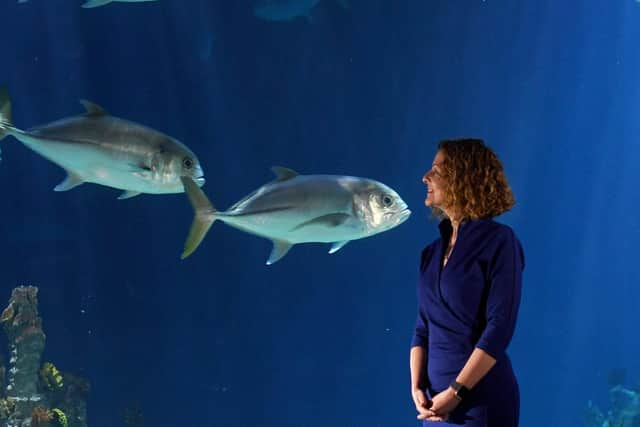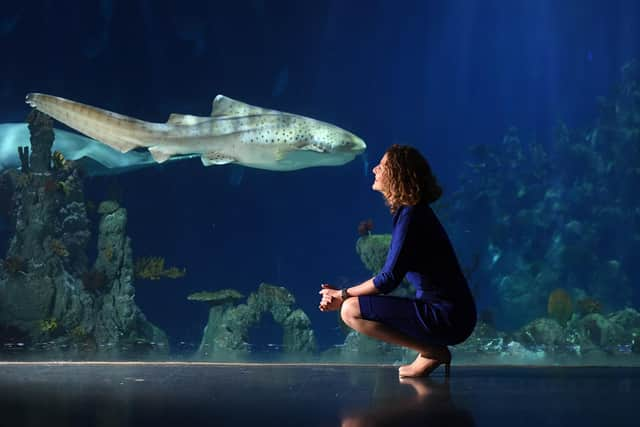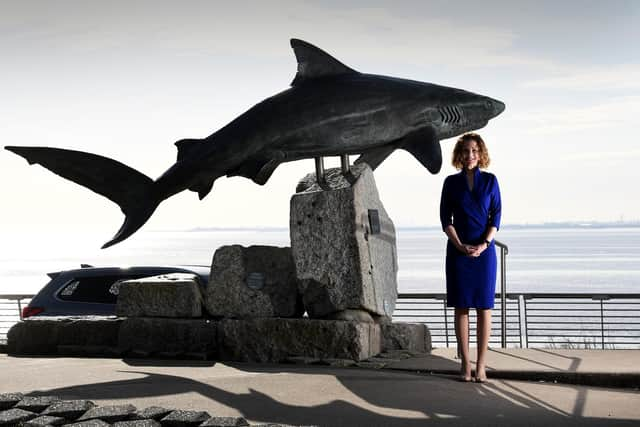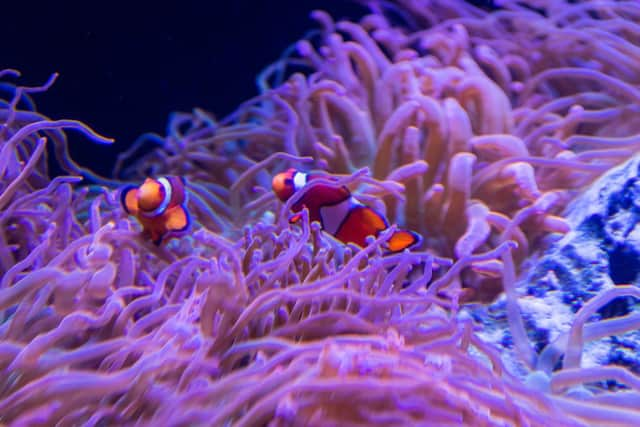The Deep in Hull turns 20 years old: How the attraction revitalised Hull and preserves wildlife across the globe
It is almost impossible to think of Hull without The Deep. The “submarium”, with its iconic metal, glass and concrete structure peering out over the Humber, first opened its doors 20 years ago this month.
Since then it has welcomed 460,000 people a year into the city, bringing in an estimated £14.7m to Hull’s economy. This year it expects to greet its nine millionth visitor and it remains Hull’s best-known tourist attraction.
Advertisement
Hide AdAdvertisement
Hide AdChief executive Katy Duke has been there since it was a construction site.


A marine biologist by background, Duke initially joined as a member of The Deep’s husbandry team. She went on to become an assistant curator and curator and since 2017 she has served as CEO.
“It’s why I feel old,” she jokes. “My original thought was that I would come for a couple of years and then move on.”
The Deep was in planning for four or five years before Duke joined. Intended as a regeneration project for the city, it was primarily funded by the Millennium Commission, remaining to this day its most commercially successful project.
Advertisement
Hide AdAdvertisement
Hide AdThe Deep’s remit was simple, to bring people into Hull and to complement the maritime history of the city, a mission accomplished in spades. “Personally I have seen huge changes in Hull,” says Duke.


“I think it is far more cosmopolitan. Areas like Humber Street and the marina can rival any big cities, which is really nice to see.
“The people of Hull are standing a little bit taller. The City of Culture, in 2017, played a big role in that. Hull can be proud of being Hull. It has its unique culture and the people of Hull are incredibly friendly, and visitors always comment on this.
“I think our role has been pretty huge in that, without blowing our own trumpet. Before The Deep, I am not so sure Hull had much of a tourist industry. The whole idea of The Deep was that it would bring people in and that is what we have successfully done.”
Advertisement
Hide AdAdvertisement
Hide AdInitially planned as an outreach of the Natural History Museum, its purpose shifted towards being a museum of the oceans before reaching the point where it would become a living collection. Among its offerings are sharks, turtles, penguins and the UK’s only green sawfish. It is beloved by nature lovers of all ages and enjoys a significant number of repeat visitors each year.


The Deep oversees conservation efforts across the globe and campaigns for ecological awareness and sustainability, both worldwide and via its exhibitions. Duke says this grassroots culture runs through the whole organisation.
“What I personally love about The Deep is that it is a small enough organisation that it almost feels like a family-run attraction. We don’t have layers and layers of management. A lot of people work across different departments so we are not only doing one job. Many of us wear multiple hats. There is very little silo working going on.
“We see that in the longevity of our crew members. We have very little staff turnover. We are now employing people who visited us on their first school trip or they are bringing their families. ”
Advertisement
Hide AdAdvertisement
Hide AdTwenty years marks a significant milestone for any institution. However, The Deep plans to mark the anniversary in a manner which is low key rather than with an expensive bonanza.


Like so many organisations, the pandemic blew a metaphorical hole in its finances. The Deep was closed to the public for months at a stretch but, unlike other attractions, its living breathing exhibits needed maintenance to the tune of £5,500 a day.
“It was a very stressful couple of years, to be honest,” says Duke. “Very sadly we had to make redundancies for the first time in The Deep’s history, which is not something I hope we ever have to repeat. But we were literally in measures to enable the organisation to survive. Certainly this time last year, it was getting incredibly worrying. We had been closed for so long and we were getting down to the last weeks of reserves.
“Thankfully the Government stepped in and provided us with some essential running costs to help us get through those last two months.”
Advertisement
Hide AdAdvertisement
Hide AdThe Deep finally reopened on May 17, last year, albeit at reduced capacity. One lasting legacy of the pandemic is that visitors now need to book allocated time slots, something management said has made the flow of people much more evenly distributed over the course of the day.
But despite a good summer and autumn, Duke says The Deep remains very much still in a recovery mode. School trip visitor numbers and corporate event bookings have yet to return to pre-pandemic levels.
“It was lovely to see people return, but we were returning with our Covid measures in place and restricted visitor numbers so it didn’t feel normal. We have our regulars who have missed us who come as much as once a week. It was a huge relief to be back open but we were also incredibly cautious because we thought ‘would people want to come back? Would they want to come to an indoor venue and be with people again in a public space?’”


But return they did and The Deep is now looking ahead to the future, which Duke is keen to make sure is as vibrant as possible. A huge focus is on making the attraction as welcoming as it can be for everyone, particularly those with accessibility or diversity issues, even going so far as to offer bespoke visits for the public.
Advertisement
Hide AdAdvertisement
Hide AdSimilarly it is seeking to match its sustainability campaigning with its own operations, with single- use plastics virtually eradicated from its kitchens and a focus on making its retail offering as green as possible. It is in position to do this because of the way The Deep is set up.
“We are unique in that we are an independent charity,” adds Duke. “We stand on our own two feet and always have. There is no one taking profits out of The Deep. Any money we get gets put back into conservation, education, the exhibitions, the building – we are self-perpetuating and want to be here for the long term. We managed the pandemic after all!”
Since reopening ,The Deep has picked up its conservation work again in earnest, whether that is planting seagrass at Spurn Point, reintroducing oysters or restarting its turtle rehabilitation work in places like New England.
With the planet and its seas in such an ecologically imperilled state, Duke and her team have a difficult balancing act between raising awareness of the situation and still offering a fun family-friendly day out. “Often conservation is a dry topic and it is not nice messaging,” she says. “We have to be a fun day out but also to engage people and once they are here, it is about hooking them in. We need to be creating the next generation of marine biologists.”
Advertisement
Hide AdAdvertisement
Hide AdWhich leads us nicely to the big question, what is her favourite part of The Deep?
“I think I would actually say our Changing Seas exhibit. The story is ocean acidification but we have not called it ocean acidification because that would be a massive turn-off. But we have tried to use ways of engaging people with that.
“The reason I love it is that it is a difficult subject and we have done it really well. I think we can give ourselves a pat on the back for that one.”
www.thedeep.co.uk
Comment Guidelines
National World encourages reader discussion on our stories. User feedback, insights and back-and-forth exchanges add a rich layer of context to reporting. Please review our Community Guidelines before commenting.